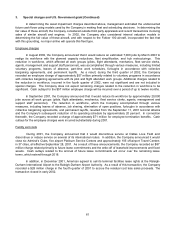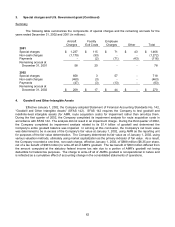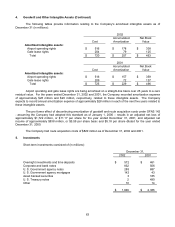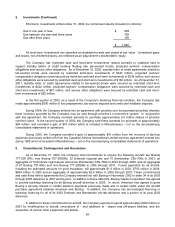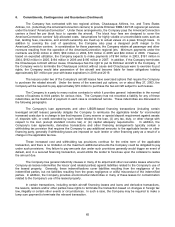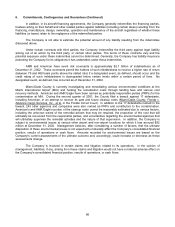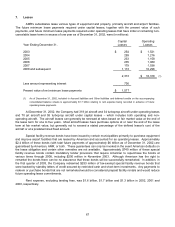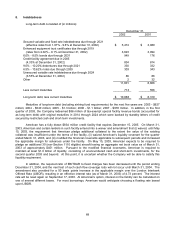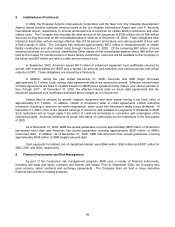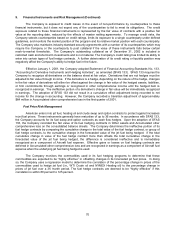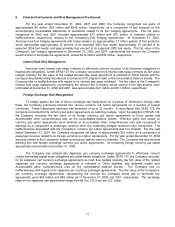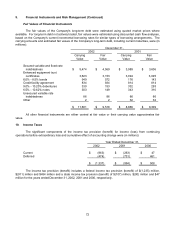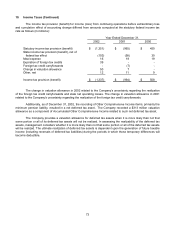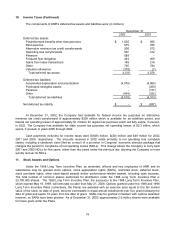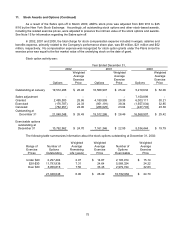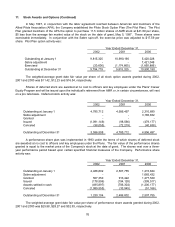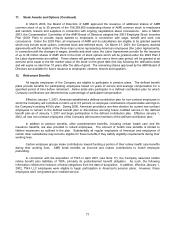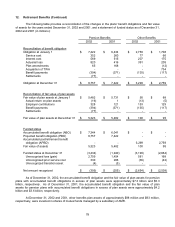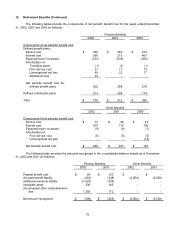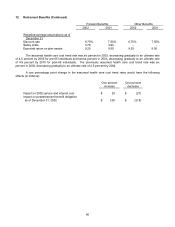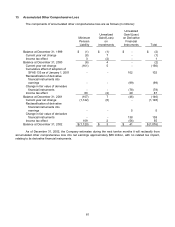American Airlines 2002 Annual Report Download - page 73
Download and view the complete annual report
Please find page 73 of the 2002 American Airlines annual report below. You can navigate through the pages in the report by either clicking on the pages listed below, or by using the keyword search tool below to find specific information within the annual report.71
9. Financial Instruments and Risk Management (Continued)
For the year ended December 31, 2002, 2001 and 2000, the Company recognized net gains of
approximately $4 million, $29 million and $545 million, respectively, as a component of fuel expense on the
accompanying consolidated statements of operations related to its fuel hedging agreements. The net gains
recognized in 2002 and 2001 included approximately $13 million and $72 million of expense related to
ineffectiveness, respectively, relating to the Company’s fuel hedging agreements. At December 31, 2002,
American had fuel hedging agreements with broker-dealers on approximately 1.7 billion gallons of fuel products,
which represented approximately 32 percent of its expected 2003 fuel needs, approximately 15 percent of its
expected 2004 fuel needs, and approximately four percent of its expected 2005 fuel needs. The fair value of the
Company’s fuel hedging agreements at December 31, 2002 and 2001, representing the amount the Company
would receive to terminate the agreements, totaled $212 million and $39 million, respectively.
Interest Rate Risk Management
American uses interest rate swap contracts to effectively convert a portion of its fixed-rate obligations to
floating-rate obligations. Under SFAS 133, the Company accounts for its interest rate swap contracts as fair value
hedges whereby the fair value of the related interest rate swap agreement is reflected in Other assets with the
corresponding liability being recorded as a component of Long-term debt on the consolidated balance sheets. The
Company has no ineffectiveness with regard to its interest rate swap contracts. The fair value of the Company’s
interest rate swap agreements, representing the amount the Company would receive if the agreements were
terminated at December 31, 2002 and 2001, was approximately $21 million and $11 million, respectively.
Foreign Exchange Risk Management
To hedge against the risk of future exchange rate fluctuations on a portion of American’s foreign cash
flows, the Company previously entered into various currency put option agreements on a number of foreign
currencies. These instruments generally had maturities of up to 12 months. In accordance with SFAS 133, the
Company accounted for its currency put option agreements as cash flow hedges. Upon the adoption of SFAS 133,
the Company recorded the fair value of its foreign currency put option agreements in Other assets and
Accumulated other comprehensive loss on the consolidated balance sheets. Effective gains and losses on
currency put option agreements were deferred in Accumulated other comprehensive loss and recognized in
earnings as a component of passenger revenue when the underlying hedged revenues were recognized. The
ineffectiveness associated with the Company’s currency put option agreements was not material. For the year
ended December 31, 2001, the Company recognized net gains of approximately $14 million as a component of
passenger revenue related to its foreign currency put option agreements. For the year ended December 31, 2002
amounts related to the Company’s foreign currency put options were not material. The Company has discontinued
entering into new foreign exchange currency put option agreements. All remaining foreign currency put option
agreements expired before December 31, 2002.
The Company has entered into Japanese yen currency exchange agreements to effectively convert
certain yen-based capital lease obligations into dollar-based obligations. Under SFAS 133, the Company accounts
for its Japanese yen currency exchange agreements as cash flow hedges whereby the fair value of the related
Japanese yen currency exchange agreements is reflected in Other liabilities and deferred credits and
Accumulated other comprehensive loss on the consolidated balance sheets. The Company has no
ineffectiveness with regard to its Japanese yen currency exchange agreements. The fair value of the Company’s
yen currency exchange agreements, representing the amount the Company would pay to terminate the
agreements, were $44 million and $45 million as of December 31, 2002 and 2001, respectively. The exchange
rates on the Japanese yen agreements range from 66.5 to 113.5 yen per U.S. dollar.


